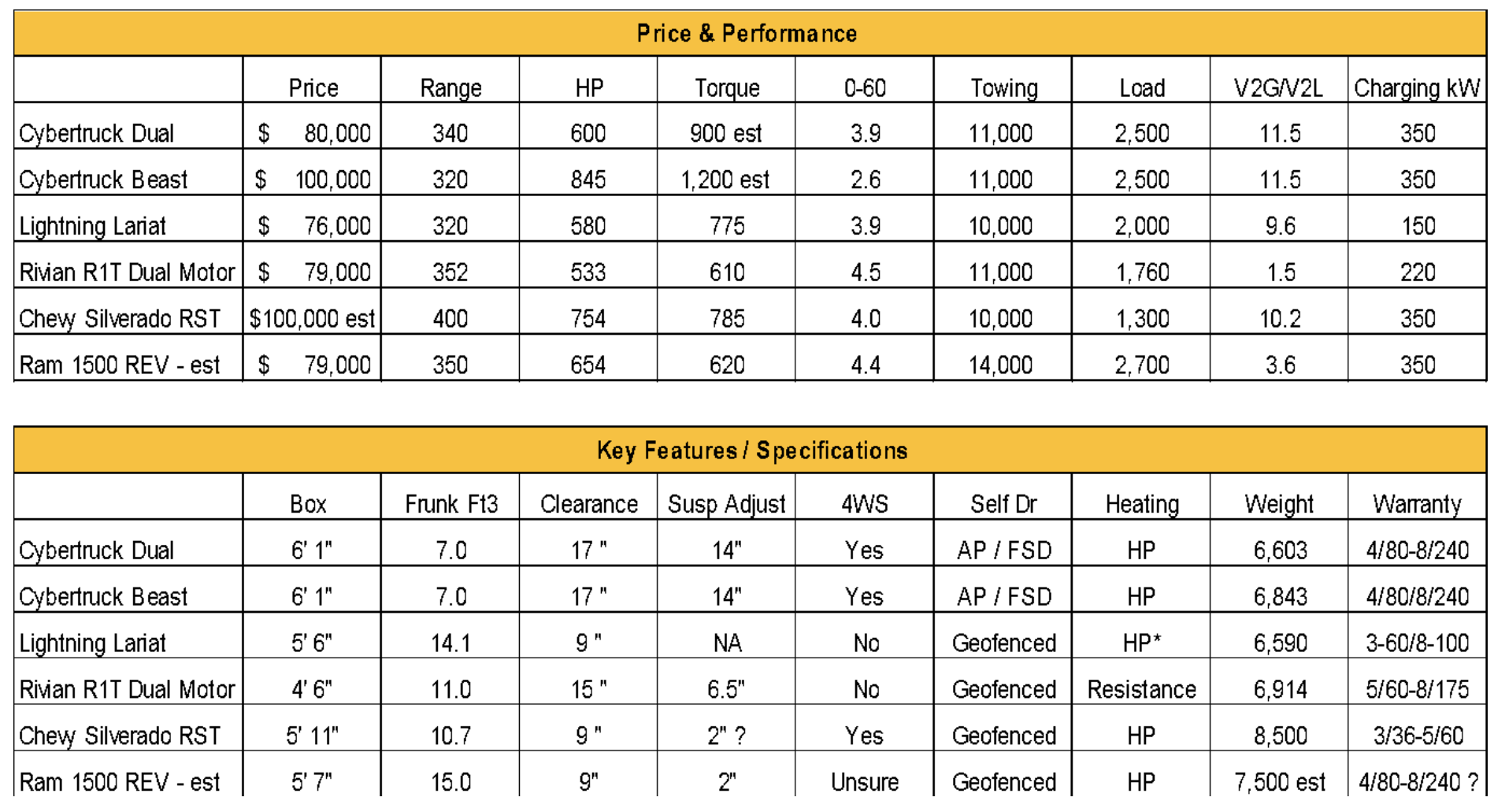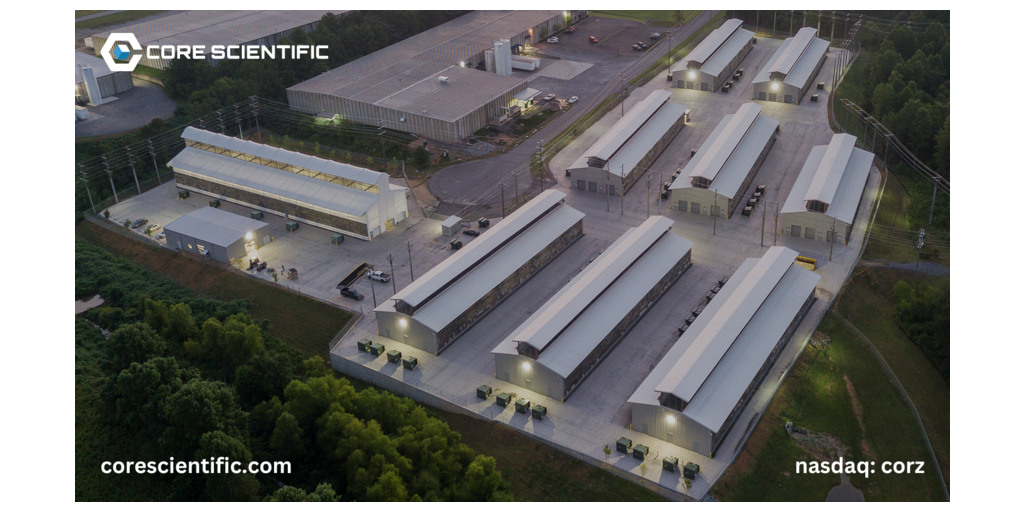Sign up for daily news updates from CleanTechnica on email. Or follow us on Google News!
I put down a reservation for a Cybertruck on the first day of the launch back in 2019 since I knew I’d be replacing my old Dodge 4×4 2500 within a few years. I didn’t really like the look of Cybertruck at the time, to be honest, but I bought a Tesla Model S 85D when they came out in 2015, so I was very sure I specifically wanted a BEV truck once they came out. There was nothing on the market at the time, so I knew reserving early would keep Cybertruck as an option once it became available so that I could at least consider it, along with other BEV trucks on the market, once it came time to buy. The anticipated price, specs, features, toughness, and range of the Cybertruck were the reasons I placed a reservation.
The Cybertruck launch in 2019 appeared to make the decision of what to buy simple. The top-spec Trimotor Cybertruck was predicted to have up to 500 miles of range plus all the power, capacity, and luxury features that I wanted at a relatively affordable price. Nothing on the market, or coming to market, appeared to come close to this “beast.”
With the arrival of the Cybertruck last month, I was certain its price would be much higher than suggested in 2019, given the entire car market went up 40–50% in that time period. However, I was very disappointed, along with millions of others I suspect, when the Cybertruck tri-motor proved to have a much lower range than anticipated along with its anticipated much higher price.
This new reality of course made my buying decision much harder since the Cybertruck now appeared to be merely “competitive” in its field as opposed to a clear-cut standout. For me, this meant all BEV truck options were firmly on the table and I’d need to do a deep dive to see which, if any, of the BEV trucks on the market in 2024–2025 could meet my needs. This article is about how I decided what to buy.
Now, obviously, what I personally want, need, and value in a truck will be different from other buyers, since we are all unique. That said, I suspect the data and the process that I used may prove helpful to anyone looking to buy. Fortunately, as this analysis shows, we have some excellent choices on the market. I hope you enjoy this review.
The options that I felt were worth considering included the Cybertruck, Lightning, Rivian R1T, Chevy Silverado BEV, and Ram 1500 REV. I did not consider the upcoming Ram Charger hybrid since I am not interested in a hybrid, and the Hummer is just not for me.
I want to be clear that I’ve never been particularly brand loyal, so I’ve wound up owning pretty much every make over the years, including most high-end brands. I work hard to check my biases before I buy any vehicle since I understand how easy it is to buy stuff based purely on emotion and to overlook options that may prove to be very good. Emotion is important when buying a vehicle of course, since everyone wants to like what they drive, but I prefer to temper my emotional wants with facts and data to make sure I am buying what I need as well as what I want.
As a management consultant, I basically do math and analysis for a living. I regularly make spreadsheets and I write custom software … so laying out data and doing formal analysis is a very “normal” process for me. It is what I do. I do this even for mundane things like tires, to be honest. Yes, I’m a nerd.
I should also mention that in addition to my “desk job” as a management consultant, I also run a solar installation business, I have a farm, and I am a trained automotive mechanic. The takeaway is that I drive a lot (2× more than average), I’ve always owned trucks, I use trucks daily, and I know trucks. Specifically, I have owned Ford trucks, a Chevy, a Toyota, and, as mentioned, I currently have a Dodge 2500 4×4. I have not driven a Rivian, but it gets great reviews and I’m sure it is a good vehicle.
I will start with a warning that the tables I put together below are probably not perfectly accurate. There are many possible configurations for the vehicles I outlined, each region of the country is priced a bit differently, dealers may sell for more or less than the prices posted, plus I had a heck of a time even finding reliable and consistent information/specs in some cases. Further, the tables below do not include local or national incentives when it comes to price.
My goal in this exercise was to compare similarly equipped (higher-end) BEV trucks that will be available in 2024–2025, since a “higher-end” truck is what I personally want to buy in this timeframe.
My Process
Step 1 — I started by making a list on a spreadsheet of my wants and needs for a BEV truck, along with minimum performance targets for each item. I defined my “needs” as non-negotiable specs and features that I absolutely need to have. My “wants” were defined as those that are simply less critical to me. I also recognized that the trucks on my list often offered interesting features that, while not particular wants or needs for me, nevertheless offered clear value. I tracked and valued these items in this analysis as “bonus” features.
Step 2 — Eliminate trucks that do not meet my needs from the analysis. For me “needs” were a pass/fail consideration since I would not buy a vehicle that did not meet my needs.
Step 3 — Points & ranking the contenders. I decided to use a point system to rate the trucks that made it to this step. Fully meeting a “need” is assigned 4 points, while wants are worth 2 points, and bonus features earn 1 point. Exceeding a specification also can earn points as this offers value in the same way a bonus feature does. Exceeding a specification by more than 10% earns an extra “bonus” point. In a similar way, failing to meet a non-critical (want) specification by more than 10% results in the loss of a point, and a miss by 20% is a loss of 2 points.
Step 4 — Selection: Total points wins.
Comparison Table
Wants & Needs Targets
Price / Performance
- Price — $80,000 (or so) — I would pay more than this for a truck that offered more value to me, so this item is simply a want.
- Range — 300 miles minimum (450+ much preferred) — I did the math on all the routes I’ve taken over the past 5 years to see how much range I needed (as opposed to wanted). I wanted 500 miles of range, but it turns out I only need 300.
- Performance — 0–60 in <4 seconds — I’ve always liked fast cars, but clearly this level of power is a simple want.
- Towing — 10,000+ lb — My maximum towing weight is closer to 7,500 lb, but I’ve had bad experiences pushing trucks to their weight limits, so I consider 10,000 lb as my need.
- Load — 2,000+ lb — My maximum loads over the past few years have been 2,000 lb 4×8 pallets and I’m regularly hauling 1,500 lb. I consider 2,000 lb my minimum need.
- Power outlets — 30 amps × 120/240 — I haul a 30-amp × 240 V generator around to jobs and I often use the full generator output. I need 30 amps at 240.
- Charging — 250+ kW — Given how large BEV truck batteries are, I would prefer to charge at a reasonable speed. This item is a want, however, since I don’t Supercharge that much.
- Supercharger Network — The CCS1 network is simply not reliable in my opinion, so access to Tesla’s Supercharger network is a clear need for me. Fortunately, most OEMs have seen the light and will be participating in Tesla’s charging network, making these vehicles an option for me.
Key Features / Specifications
- Box — 6 foot — As mentioned, I often haul 2,000 lb 4×8 pallets. This means I need a box that can reasonably accommodate this size of load.
- Frunk — 5 cubic feet — Considering I rarely use the roughly 5 cubic foot frunk in my Model S, I consider 5 cubic feet as a decent minimum target and a “want.”
- Clearance — 12” — I live in the country on a farm, and I go off road regularly, so while I get away with about 8” of clearance with my Dodge, I want a bit more.
- Adjustable Suspension — 6” — I have an adjustable air suspension on my Model S, and I use it all the time. Being able to adjust ride height significantly is something I want.
- 4WS — A few manufacturers may be offering this feature. While I see clear value in it, I consider this item merely a nice “bonus” feature.
- “Autopilot” or equivalent — This is a need in my opinion since I use it all the time.
- Heat pump — We have cold winters where I live, so a more efficient heat pump heater is something I want.
- Lower Weight — Under 7,000 lb — My current Dodge weighs in at about 7,000 lb, and I don’t really want to go too much over this weight. Lighter weight is simply a “bonus” for me.
- Warranty — I was surprised that all OEMs were not offering similar warranties. Given how BEVs in general are new tech, I would prefer a longer warranty like the 8 years, 150,000 miles Tesla offers.
Other / Bonus Items
- Heated/Vented seats (etc.) — I want a well-equipped truck that includes luxury features like heated seats (preferably vented), along with other higher-end features like a good stereo.
- Toughness — I generally drive my vehicles into the ground, and as such, would much prefer a tougher truck where I didn’t have to worry about rust or door dings.
- Steer by Wire — This item was not on my radar at all, so I consider it just a nice-to-have bonus feature.
- Lockable tonneau — I often have stuff in the back of my truck and I’ve always used tonneau covers or canopies on my trucks. I consider this just a want from the manufacturer, however, since good lockable tonneaus can be purchased on the aftermarket for about $2,500.
- HEPA air filter — Given the increase in fire smoke over the past few years, a high-quality filter is something I’d prefer to have. This is a clear want for me.
- Mid-gate — Two of the trucks on my list offer a drop mid-gate and I have to say I’m very interested in this. I’m listing it as a bonus item, however, in this evaluation since I also know people who have them (Chevy Avalanche owners) do not really use them much, and I suspect I wouldn’t either.
- Other (steer by wire, weight, HEPA) — these were minor bonus considerations. I assigned a weighting of ½ point each for SBW and HEPA and one point for meeting low weight.
Analysis
Trucks that did not meet my needs
Cybertruck Beast — While I love acceleration, extreme power is clearly a want rather than a need for me and the “Beast” simply does not offer me enough value for the price. I will not go over my preferred $80,000 budget for this feature, especially when it comes at a cost to range.
Rivian R1T Dual Motor — The Rivian is tempting for me since it can be configured with a 400-mile battery that would better meet my range needs. The issue, however, is the price of the truck increases a lot for this configuration, and the reality is the box size and load capacity specs of the Rivian simply do not meet my needs.
Chevy Silverado RST — I like the looks and potential range of the Chevy, but the bottom line is, like the Rivian, it does not have the load capacity I need. I’m going to keep my eye on this truck’s specs right up until it comes time for me to buy, as it would be a contender if they increase this spec!
Ram 1500 REV — The Ram, unfortunately, was eliminated as an option for me because Stellantis has not committed to joining the Supercharging network. I’ve driven BEVs for 8 years and 210,000 miles and I know how important reliable charging is. The CCS1 network is simply not going to work for me. I will follow this truck right up until I buy a truck because otherwise the REV meets my needs, and it would be a strong contender at the right price.
Trucks that met my needs
The trucks that met my needs proved to include only the Cybertruck Dual Motor and the Lightning. To help me choose between the two, my next step (Step 3) in my selection process was to assign scores for each truck (in each area of consideration) to see which would be the best fit for me. As mentioned, needs were assessed 4 points, wants 2 points, and bonus items 1 point. The scoring is further refined offering 1 extra point for exceeding a target by 10% or more and subtracting 1 point for every 10% that is off my target. Here is how I ranked everything:
Final scores & comments
Lightning — 33 points — For a “generation 1” converted ICE pickup, I thought the Lightning did quite well in this analysis. The Lightning, however, lost points across multiple areas that held value for me. The big ones included warranty, charging speed, and how it’s relatively “old-school” suspension just isn’t up to what the competition is offering — especially for use off-road.
Cybertruck — 50 points — Cybertruck won this points evaluation by a wide margin by gaining points over the Lightning in multiple areas.
Conclusions
I found this exercise very useful personally, as it made me much more familiar with all BEV truck options on the market and what they have to offer. Clearly, which truck any one person will choose depends upon what their unique wants and needs are and how they value the “bonus” features each vehicle offers. It is nice to have so many good options!
By Luvhrtz
Have a tip for CleanTechnica? Want to advertise? Want to suggest a guest for our CleanTech Talk podcast? Contact us here.
CleanTechnica Holiday Wish Book
Our Latest EVObsession Video
I don’t like paywalls. You don’t like paywalls. Who likes paywalls? Here at CleanTechnica, we implemented a limited paywall for a while, but it always felt wrong — and it was always tough to decide what we should put behind there. In theory, your most exclusive and best content goes behind a paywall. But then fewer people read it!! So, we’ve decided to completely nix paywalls here at CleanTechnica. But…
Thank you!
CleanTechnica uses affiliate links. See our policy here.









